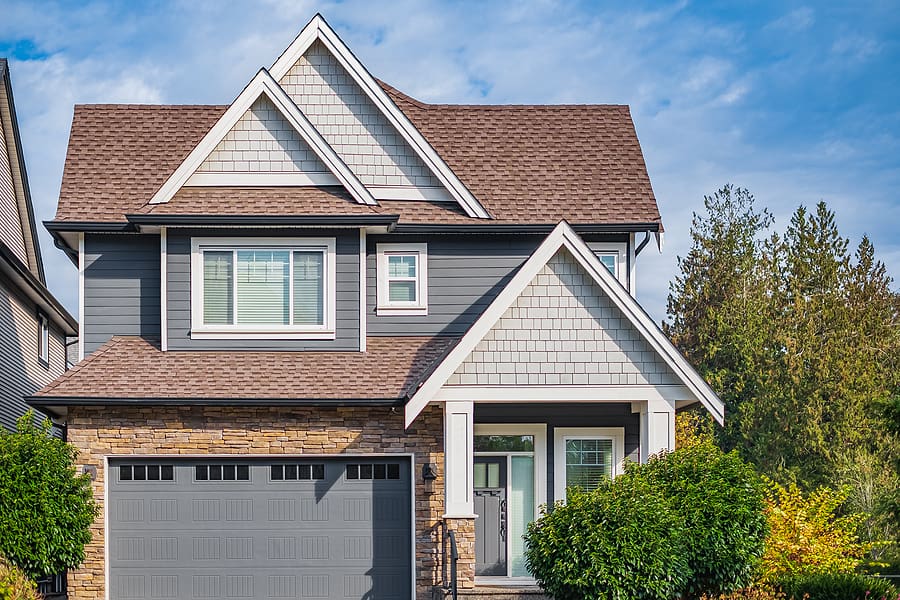Lowering Utility Bills with Home Improvements
Being a homeowner comes with many responsibilities, one of which is paying utility bills. These bills can often be high and put a strain on family finances. However, there are ways to lower your utility bills through home improvements. Not only will these improvements save you money, but they also have long-term environmental benefits as well.

Before we dive into the home improvements that can help lower your utility bills, it’s important to understand what factors contribute to high utility costs.
- Inefficient Appliances: Old or poorly maintained appliances such as refrigerators, washing machines, and air conditioners can consume large amounts of energy and result in high utility bills.
- Inadequate Insulation: Poor insulation in your home can lead to heat loss during the winter and cool air escaping during the summer, causing your heating and cooling systems to work harder and use more energy.
- Drafty Windows and Doors: Similarly, drafty windows and doors can also result in heat loss or gain, leading to higher energy use.
- Inefficient Lighting: Traditional incandescent light bulbs waste a lot of energy and contribute to higher electricity bills.
- Water Consumption: Consistently high water consumption, whether through leaks or excessive usage, can also lead to costly utility bills.
Types of Home Improvements That Lower Utility Costs
Utility bills typically include electricity, gas, water, and sewage fees. How much your utility bills are depends on a variety of factors, such as the size and age of your home, energy consumption habits, and your location. Here are some home improvements that can help lower your utility costs:
Upgrade Your Windows
Poorly insulated windows let in drafts during colder seasons and let out cool air during warmer seasons. As a result, your heating and cooling systems have to work harder to maintain a comfortable temperature, leading to higher energy consumption and bills. Older windows often consist of single-pane glass, which is not as energy-efficient as modern double or triple-pane windows. Additionally, if there’s any damage to the frame or seals of your windows, it can also result in energy loss.
To counter these issues, consider upgrading to newer energy-efficient windows. Modern windows are specially designed with multiple panes of glass and low-emissivity coatings to reduce heat transfer through the window. They also have better seals to prevent air leakage. While this may seem like a costly home improvement, it can significantly lower your heating and cooling costs in the long run.
Replace Your Roof
Another significant source of energy loss in homes is through the roof. A poorly insulated, old, or damaged roof can cause heat loss during colder seasons and heat gain when it’s warm out. This puts a strain on your heating and cooling systems, leading to higher energy consumption and bills.
To increase your home’s energy efficiency, consider replacing your old roof with a new one. Roofing materials have come a long way, and asphalt shingles can provide better insulation compared to older materials like wood or slate.
Additionally, investing in a new roof with better ventilation and more solar reflection can also be incredibly beneficial. Proper ventilation allows warm air to exit your home during hotter months, reducing the need for excessive cooling. Additionally, a roof with high solar reflectance can reduce heat absorption and keep your home cooler during warmer seasons.
Upgrade Your Exterior Siding
Not only does your home’s exterior siding protect against harsh weather conditions, but it also acts as an insulator. Older homes with outdated siding may not have adequate insulation, resulting in increased energy consumption and high utility bills. Consider upgrading your exterior siding to provide better insulation and protection against the elements.
Other Tips to Lower Utility Bills
Although the previously listed home improvements can have a significant impact on lowering your utility bills, there are also smaller changes you can make to reduce your energy consumption and save money.
- Install Energy-Efficient Appliances: As mentioned earlier, inefficient appliances can be a major contributor to high utility costs. By replacing old appliances with newer energy-efficient models, you can significantly lower your energy usage and bills. Look for appliances with an Energy Star certification, which indicates they meet strict energy efficiency guidelines.
- Upgrade to LED Lighting: Switching from traditional incandescent light bulbs to LED bulbs can save up to 75% on your lighting costs. LEDs use less energy and have a longer lifespan, making them a cost-effective option.
- Fix Water Leaks: Consistently high water bills can be a sign of leaks in your plumbing system. Addressing these leaks can lead to significant savings on your utility bills.
- Install Low-Flow Fixtures: Installing low-flow shower heads and faucets can reduce your water consumption by up to 60%. This can lead to significant savings on your water bill.
- Adjust Energy Usage Habits: Simple changes like turning off lights and electronics when not in use, using natural lighting during the day, and adjusting thermostat settings can also contribute to lower energy consumption and costs.
Invest In Home Improvements That Reduce Your Utility Costs
By implementing these home improvements, you can not only increase your home’s energy efficiency but also save money on your utility bills. Keep in mind that the initial cost of these improvements may be a significant investment, but the long-term savings and benefits make them worth considering. Not to mention, by reducing your energy consumption, you are also contributing to a more sustainable future. For a free estimate on new siding, windows, and/or a new roof, contact All-Nu Construction today.

